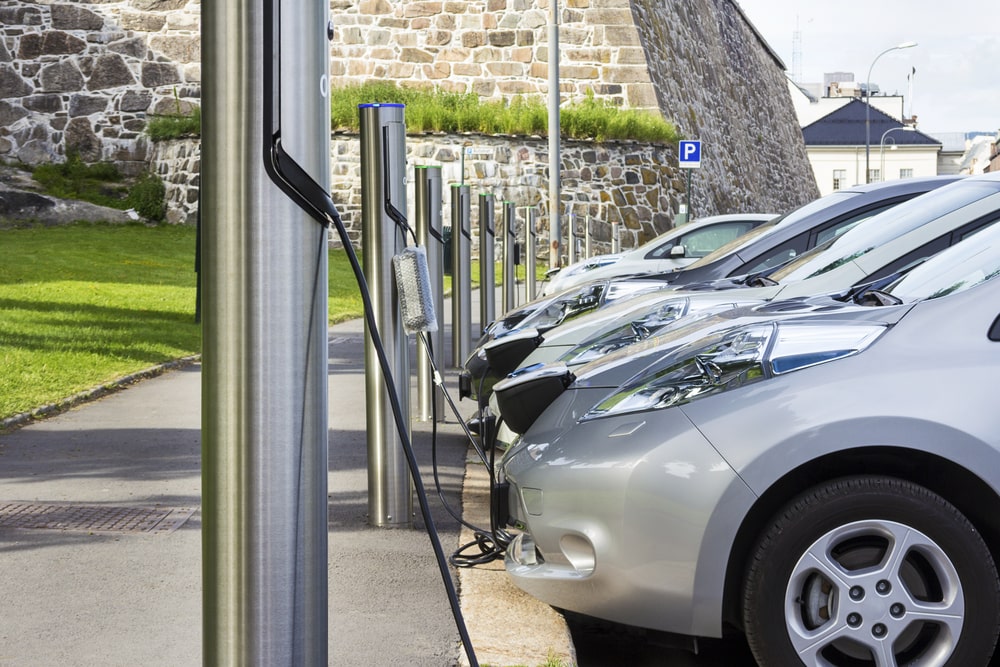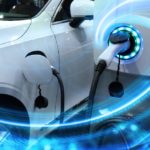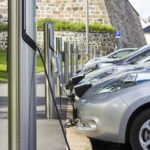News - Construction News
Homing in on a robust, future-proof infrastructure solution

The National Infrastructure Commission’s previous report from October 2017, Congestion, Capacity, Carbon: priorities for national infrastructure, clearly identified the three headline challenges for the UK’s infrastructure. Its recommendation to the government was to tackle congestion by prioritising devolved, stable, long-term funding for urban infrastructure in cities, to improve the capacity of our water supply and digital infrastructure, and to reduce our carbon emissions.
The National Infrastructure Assessment 2018 (NIA) now sets out recommendations to achieve this low carbon goal by transitioning to renewable energy sources for the country’s power and heating, combined with moving towards electric vehicles (EVs).
In this article Chris Evans, Deputy MD of Rolton Group comments on the challenges raised within the National Infrastructure Assessment 2018.
The NIA is right to estimate that the localised energy recommendations will improve our quality of life by reducing air pollution, protecting our homes from floods and making cities better places to live. Moreover, the cost of driving will fall substantially if people can switch to EVs. However, such major nationwide development doesn’t come cheaply and we’ve yet to see a robust and widespread solution that will meet the nation’s future needs.
The increase and variety of EV charging options is already bringing greater complexity to the charging network. As yet, there is no standardised system in the UK for EV charge points. Understanding the diversity needed to create a sustainable charging infrastructure, as well as what will be most suitable both now and into the future, is crucial. The challenge developers and policy makers face is to use new technologies, engineering and experience to deliver smart solutions that meet the evolving needs of homeowners and businesses by implementing a future-proof energy infrastructure.
With the government tasking the construction industry with building 300,000 new homes a year by the middle of the next decade, those responsible for shaping our built environment should be asking themselves if they are fully prepared for the impact EVs will have on our power supply. If the government does not take a more holistic approach soon – one which effectively combines energy, transport and communications infrastructure with construction strategies – we’ll all be heading for a major energy and economic dilemma.
As more owners seek to charge EVs at home, the National Grid has warned that people may have to choose between boiling a kettle or charging their car. It is predicted that EV charging will create a new peak hour of energy demand as streets of owners all plug in simultaneously, meaning we could see widespread power implications, including a greater likelihood of brownouts. Implementing smart charging solutions will be key (and legislation has just travelled through parliament to ensure it is smart) to delivering the power we need in a cost effective manner and to minimising the impact on the grid, which Ofgem says could rise by as much as 8GW by 2040 using their “2 Degrees” scenario.
Of course, we can only accurately assess the power and environmental implications of widespread EV uptake if we determine the figures for pure EVs separately from plug-in hybrids. The key concern here relates to the ability to ‘misuse’ plug-in hybrids – owners may buy them for the tax benefits without the desire or ability to plug them in, therefore limiting their efficiency to that of the internal combustion engine. Maybe this will change over time, but targets regarding EVs need to be clear one way or another.
Whilst we can see that this revolution brings many challenges, it’s also worth noting that there are a number of commercial opportunities, which have received scant attention in comparison to the general infrastructure debate. For the construction industry, EV adoption brings an opportunity to showcase progressive solutions to the growing need for charging. Forward thinking housebuilders have an opportunity to differentiate themselves by installing charging points at new developments – this could boost house prices and sales, raise their brand profile and help meet sustainability targets.
Installing communal charging areas could also provide an ongoing source of income from residents paying to charge EVs, and communal charging facilities could potentially be sold as part of the development to management companies. In time, there is even the possibility of EV batteries using the shared facility and being combined as part of an energy storage solution (Vehicle-2-Grid system), providing an income stream by selling energy back to the grid.
It is interesting to see the National Infrastructure Commission suggest that most EV charging should be carried out ‘slow and smart’ (the default option) at home or work. However, in our experience and as discussed in the NIA, legislation will be needed to move this on at the pace required, initially targeting 5% of new build properties to have chargers by 2020 and 20% by 2025. As development is often planned many years in advance, this is probably the best compromise. Property developers should pay due regard to their future projects and address the challenges relating to EVs and energy sooner rather than later to avoid discovering, too late, that they have installed inadequate transformers and cable infrastructure!
A UK-wide network of rapid chargers is also recommended to address drivers’ range anxiety – a key barrier to EV uptake. This network could see rapid charging points installed in towns and cities with a population of more than 20,000 people in areas that currently don’t have rapid chargers (239 such locations identified), making charging on-the-go more accessible.
It is predicted that such a network would need to be in place by 2022 to meet the anticipated demand. The National Infrastructure Commission also suggests legislation for local authorities to allocate 5% of parking spaces (including on-street parking) to include EV charging points by 2020, rising to 20% of parking spaces by 2025. The cost of delivering a rapid charging network like this has been quoted at around £10M. This seems a small price to pay for the removal of range anxiety to aid EV take up, and exceptionally good value when compared to the cost of HS2 at £9.3Bn.
The NIA covers many topics including the Autonomous Vehicles (AVs) and its requirement for supporting infrastructure. For AVs to be suitably addressed, it is good to see that within the report due regard is paid to full fibre rollout and reference made to fully connected vehicles/AVs, whilst highlighting the importance of the rollout of 5G mobile data on which connected vehicles/AVs will rely. However, the challenges of bringing this infrastructure to rural areas also needs to be fully considered; otherwise we could end up with limited 5G distribution to cover connected/AV only in cities and major designated highways – a very different scenario to the AV (almost) everywhere landscape thought ideal.
Rolton Group recently authored a strategy paper which explores the challenges, impact on the built environment and the potential commercial opportunities available for UK businesses, in light of the growing uptake of EVs. One of the major considerations for developers was to take a strategic view now of how widespread EV ownership will impact their current developments and future projects. As EVs become increasingly common, drivers will expect greater availability of charging points and integrating the new infrastructure required will be easier – and less expensive – during the early stages of building projects.
For mixed use schemes, considering how commercial and residential spaces will share the energy infrastructure will be essential. On larger schemes, commercial areas could provide space for decentralised energy generation of combined heat and power solutions to support increased power demands across the entire site. Off-grid renewable power supply solutions – such as waste to energy plants, PV or wind turbines – would not only facilitate EV power requirements (at least in part) but would also secure future energy supply on site. In addition, such schemes would go towards meeting developers’ – and government – environmental targets.
There is a clear window of opportunity for progressive developers to steal a march on the competition, maximise the commercial potential of EVs and carve out a market-leading brand position. Yet, while a few developers may be blazing a trail for others to follow, that will only take us so far. The government must take a more holistic approach – combining housing, infrastructure, energy and transport strategies. If the UK is to realise its bold low-carbon ambitions, it is imperative that policymakers collaborate effectively with developers and the energy industry to overcome the challenges of the brave new world we’re creating.
If you are interested in finding out more about key infrastructure trends today, you may like to register to attend the flagship infrastructure exhibition at the NEC in April 2019. Click here for more information on how to register for the UK Infrastructure Show 2019.
If you would like to read more articles like this then please click here.
Related Articles
More News
- Homes England acquires Ripon Barracks from MOD
3 Jul 25
Homes England has acquired land at Ripon Barracks which will be developed into 1,300 new
- University joins forces to address critical construction and housebuilding skills gap
2 Jul 25
The University of Salford is collaborating with Cube Thinking to support Barratt Homes in bridging the shift in skills requirements.
- Merit Appointed to NHS Shared Business Services Modular Building Framework
1 Jul 25
Merit is pleased to announce its successful appointment to the NHS Shared Business Services (NHS SBS)






